 
|
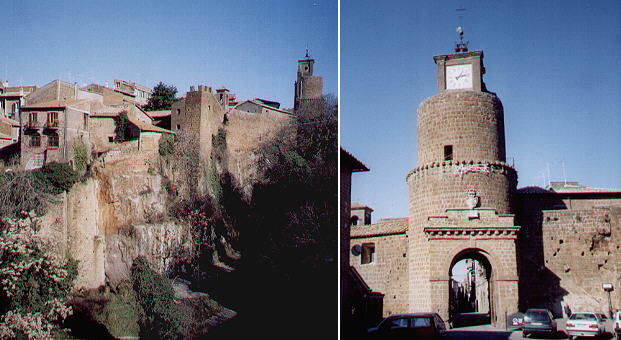 | ||
The soft volcanic soil of northern Latium is cut by deep ravines caused by small rivers; the first inhabitants of the region often chose to settle at the junction of two ravines so that the access to their villages could be easily protected from hostile attacks. The origin of Barbarano goes back to those old times: its imposing walls are short - just some 200 yards in length - because the rest of the town is protected by two precipitous ravines.
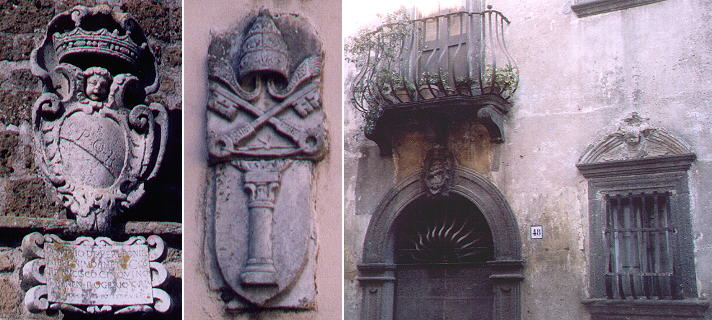 | ||
The official name of the town is Barbarano Romano and the association with Rome is strengthened by the town coat of arms, whose motto S(enatus). P(opulus).Q(ue).B(arbaranorum). is clearly derived from the coat of arms of Rome. It is not the only coat of arms one can find in Barbarano: the town was a direct possession of the pope, although it was assigned to local lords. There is a coat of arms of Pope Martinus V, Colonna (1417-31) on the fašade of a church near the main gate of Barbarano. Other coats of arms of local families can be seen in the well preserved historical centre of Barbarano.
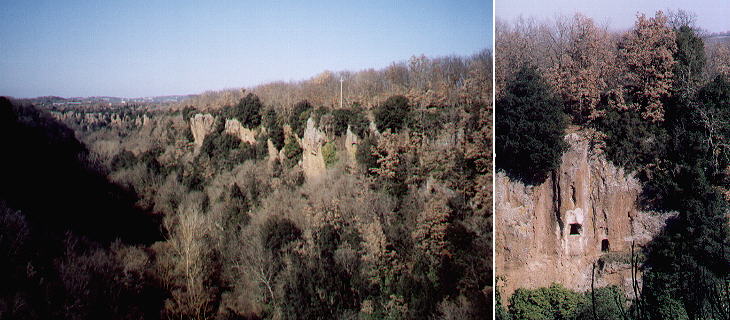 | ||
The main street of Barbarano ends with a terrace which offers a fine view over the gorge of the River Biedano. Its walls show many caves, which in most cases were at least partially made by the Etruscans, who used them as tombs.
Blera
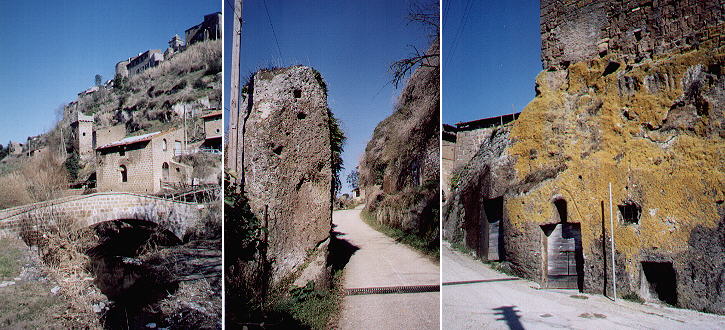 | ||
The very ancient town of Blera was built on a ridge completely isolated by the gorge of River Biedano and by a parallel ravine. The town could only be accessed by crossing a bridge and then going along a steep street, for which the Etruscans cut in some points the tufa rock. A medieval bridge replaced the old Roman bridge, the ruins of which can still be seen a mile upstream. Today a modern bridge has put an end to the isolation of Blera, but it is worthwhile approaching the town from the old route to see the caves where the poor lived and which now are used for storage.
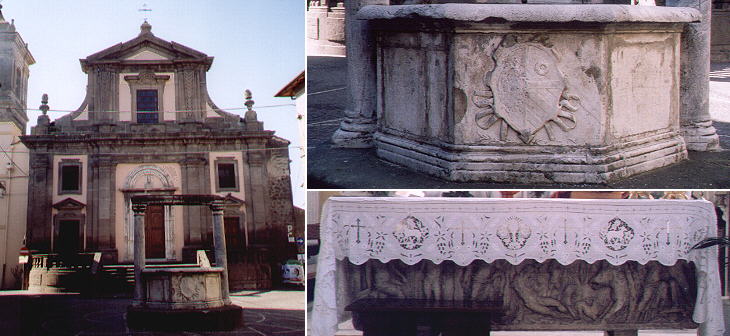 | ||
The main square and the streets of Blera are a sort of open air museum, with exhibits from all periods of its long history. Its main church was built on a Roman temple and the altar of the church is a Roman sarcophagus portraying Meleager hunting the Calydonian boar, a most appropriate subject because Blera is very near Maremma, the marshy plain where the boar was actually hunted until very recently. The fašade was modified in the XVIIIth century but it retains a Renaissance portal (shown in the image used as a background for this page).
The well goes back to the Renaissance too: it must have been very deep to intercept the water-bearing stratum: it is decorated with a coat of arms, the right side of which is still readable and tells us that Blera belonged to the Orsini.
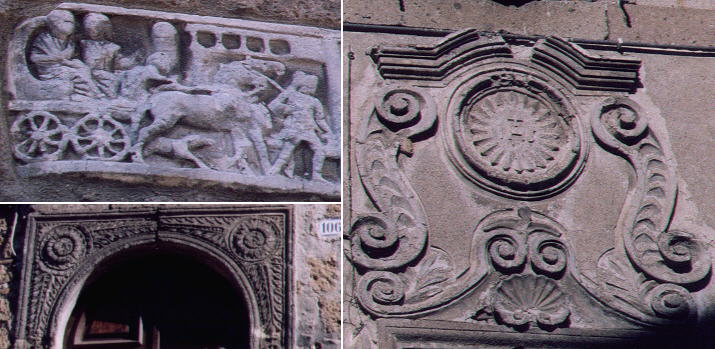 | ||
Vetralla
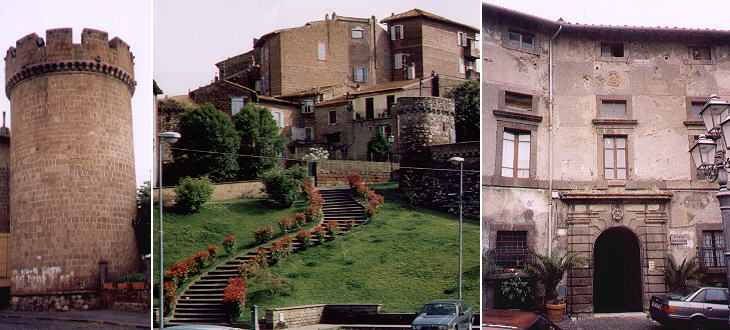 | ||
Vetralla, although being built on a low ridge, did not have natural defences: so it was protected by a complete set of walls and by a small fortress located on its highest point: the walls in some areas were pulled down to allow easier access to the old town where some Renaissance palaces show that Vetralla had some importance (in 1783 Pope Pius VI gave it the title of City).
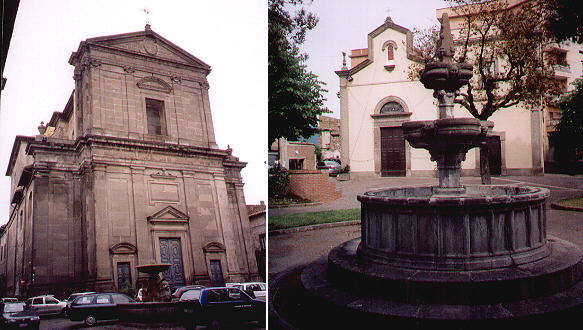 | ||
The cathedral is a very large building designed by Giovanni Battista Contini in 1711, but completed after his death. The shape of a medieval fountain before the old church of SS. Filippo e Giacomo is a sign that Vetralla is close to Viterbo, where this kind of fountains is very common.
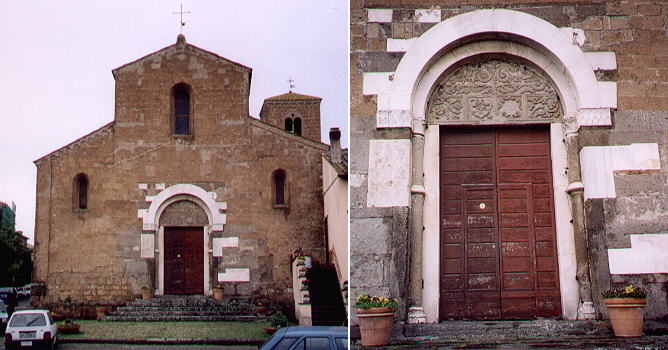 | ||
A very old church near the northern end of Vetralla was enlarged in the XIth century and later on acquired by the Franciscans. Its portal is decorated with unusual reliefs.
From Vetralla you can easily reach Viterbo.
Move back to Manziana, Canale Monterano and Veiano.
some other walks:
Walks with Ferdinand Gregorovius in the Roman countryside
In and about Viterbo
From Civitavecchia to Civita Castellana
Around Monte Cimino
A Pigrims' Way - Via Francigena
In Maremma
Anticoli Corrado where the painters found their models
A walk to Porta Furba
Via Appia Antica from Cecilia Metella to Torre in Selci
Via Appia Antica from Torre in Selci to Frattocchie
A Walk to Ponte di Nona
Branching off Via Cassia: S. Maria di Galeria, Isola Farnese and Formello
A Walk to Malborghetto
See my Home Page on Baroque Rome or my Home Page on Rome in the footsteps of an XVIIIth century traveller
All images © 1999 - 2006 by Roberto Piperno. Write to romapip@quipo.it
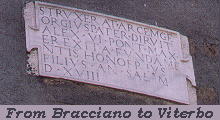 Barbarano, Blera and Vetralla
Barbarano, Blera and Vetralla